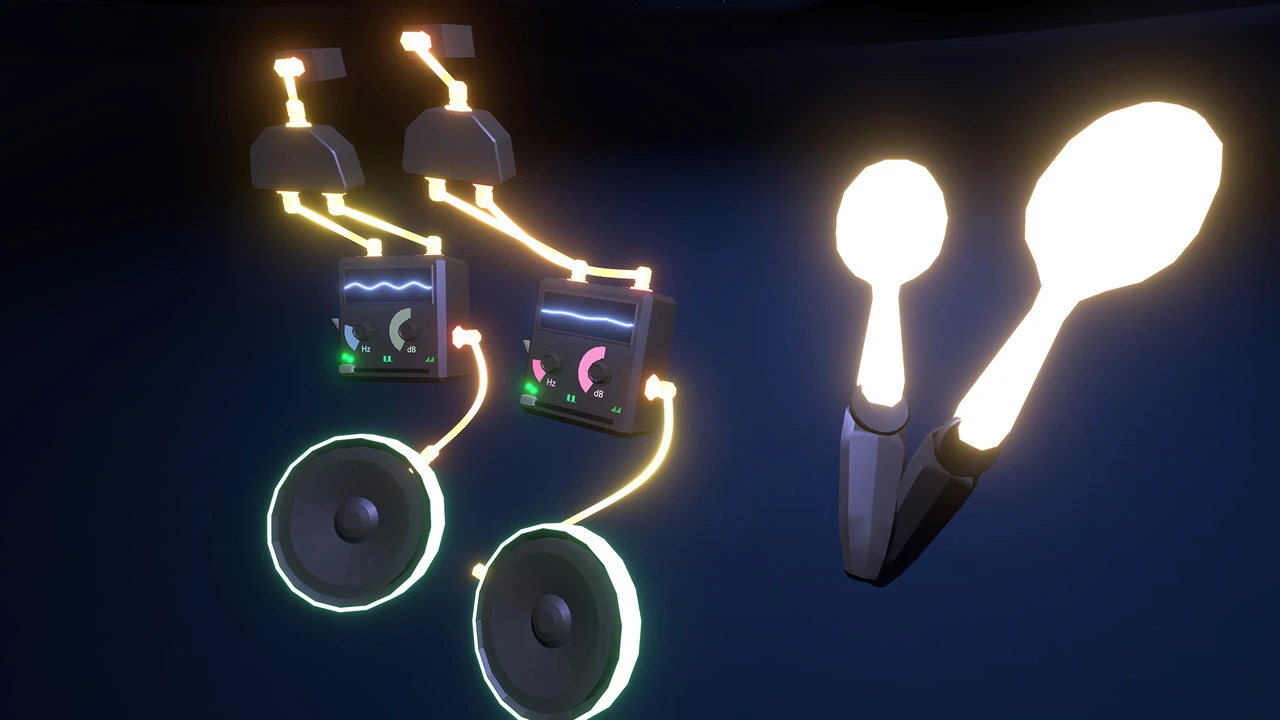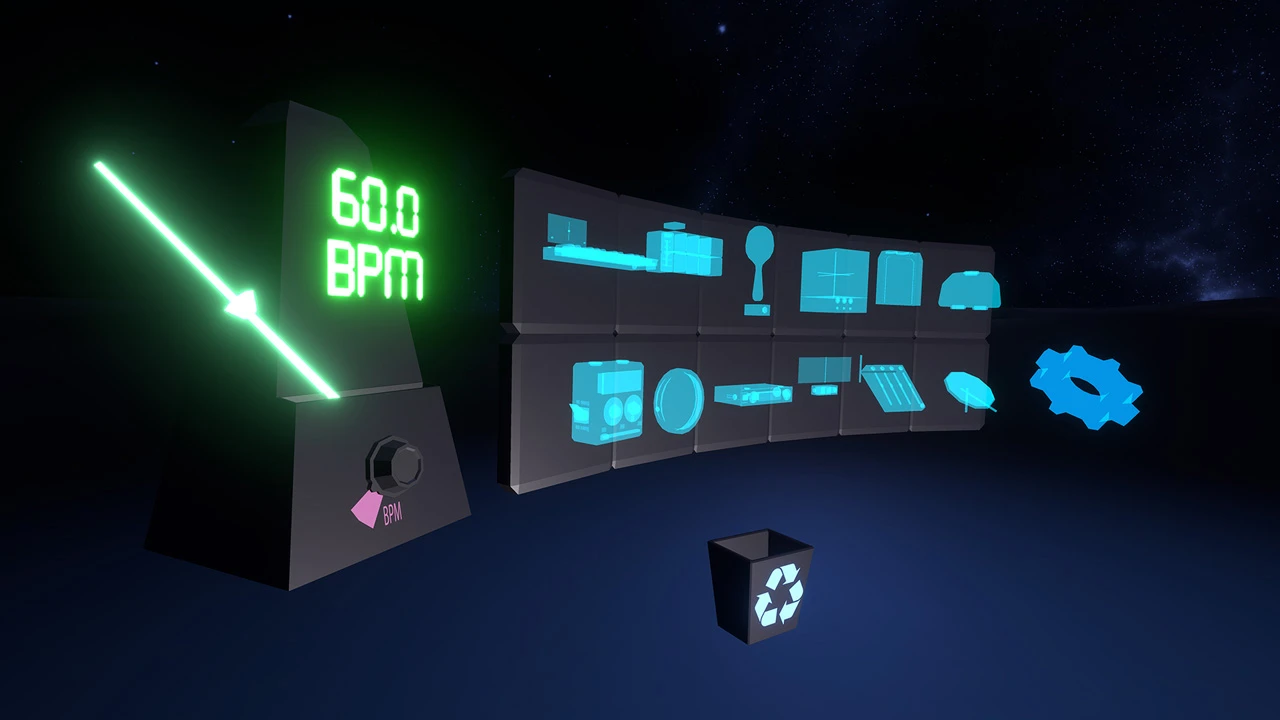I’m surrounded by tens of thousands of dollars in electronic music equipment. Samplers. Synthesizers. Drums. Maracas. I have almost no idea what I’m doing. Most of this stuff I’ve never tried before. Yet with the flick of my wrist, I can toss another speaker into the air. With the turn of a knob, I can turn a cello riff into a deep echoing baseline. And soon, I’ve composed a new beat worthy of a sub-mediocre early ’90s R&B single.
Everyone’s gotta start somewhere.
With my head and hands inside the HTC Vive virtual reality system, I’m trying a $10 beta app called SoundStage. Developed by the one-man-band Logan Olson, who studied VR with pioneer Mark Bolas before spending a few years in the R&D department at Disney, SoundStage allows you to build room-sized music studios, filled with highly customized digital audio equipment. Today, it’s a fun experimental app. Tomorrow, it might be used for serious composition, or in Olson’s wildest dreams, live performance.

A menu floats in midair–you tap on any option you want, and it becomes a physical object in your hand, to be placed anywhere in 3D space. This means you can, say, create electronic drum sets of near-infinite size that you can play with virtual drumsticks (your two Vive controllers). It works surprisingly well, even if there’s a near-imperceptible delay Olson wants to eliminate.
But the real possibilities emerge when you start crossing the streams by connecting each piece with glowing wires–as if you’re connecting real audio components in a neon-infused home theater. Plug a sampler into a sequencer, and you can build beats. Run a keyboard into a synthesizer, and you’re playing a Moog-worthy electronic jam. Sometimes, amidst all these options, I’m confused why a black box plugged into something else makes no sound at all. (Assumably, there’s nothing going wrong here; the truth is that I have no idea what should plug into what.) Yet the tactility of the system–combined with floating information buttons you can click for more info–allow you to explore specialized musical equipment without the fear of breaking anything, to attack the topic with all the gusto of poking around Photoshop’s menus for the first time.

“There’s currently a steep learning curve that could be mellowed a bit,” says Olson. “The challenge is doing that without holding the user’s hand for so long they stop proactively exploring and discovering. I suspect it’ll take quite a bit of playtesting to find that balance.”
Olson’s other big design challenge is deciding where the real world should end and the virtual world should begin. Today, he’s basically built the ultimate skeuomorphic studio, in which instruments appear strictly as themselves. But as he continues iterating on the app, he’ll begin to push the limits.
“Now that SoundStage has quite a few instruments with real-world counterparts, I think I have enough of an ‘anchor’ in the familiar to start wading into the deep end,” says Olson. “I’m excited to create more abstract instruments that don’t obey the laws of reality, and I’m curious how the community responds to them.”
Already, Olson has built a strange laser box that allows you to augment sounds by moving them on an X, Y, Z axis, along with an invention he calls a XyloRoll, which is kind of like a player piano crossed with a sequencer. These wild instruments actually play into Olson’s goal, to push the bounds on how enchanted you can become inside his virtual music laboratory. He makes no claims to have created a platform for serious composition yet, but much like Google’s own Tiltbrush app, he knows it’s easy to lose yourself inside his world and wants to capitalize on that first and foremost.
“In the short-term, SoundStage’s greatest strength is as a ‘sketching’ tool,” says Olson. “The immersion and physicality of the Vive is conducive to entering a state of ‘flow,’ where an artist loses sense of self and time.”
Indeed, I spent 45 minutes inside SoundStage the first time I loaded it, which is the VR equivalent of three days. Removing the headset, I had a smile on my face, remembering one time when my middle school band director screamed at those of us who’d helped ourselves to play on some unlocked percussion equipment, rightly fearful we’d break something without a budget to replace it. Virtual reality is, perhaps, not going to be as democratizing as its fiercest zealots believe. But if nothing else, platforms like SoundStage will let you experiment with some percussion, without the fear of repercussion.
[All Images: SoundStageVR]
Recognize your brand’s excellence by applying to this year’s Brands That Matter Awards before the early-rate deadline, May 3.






